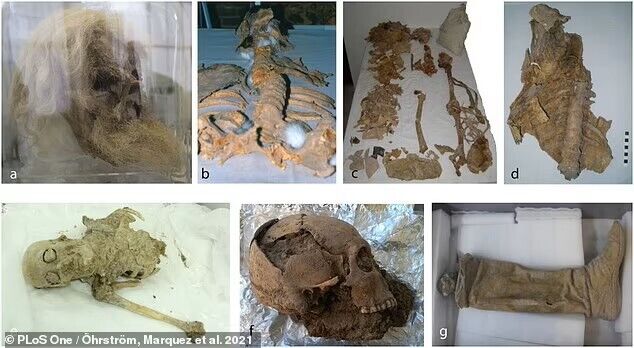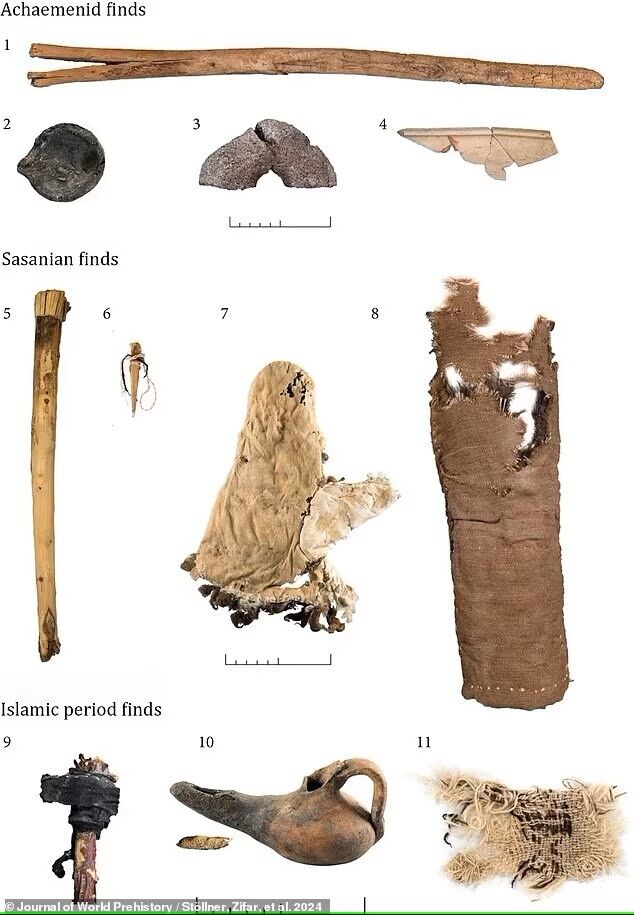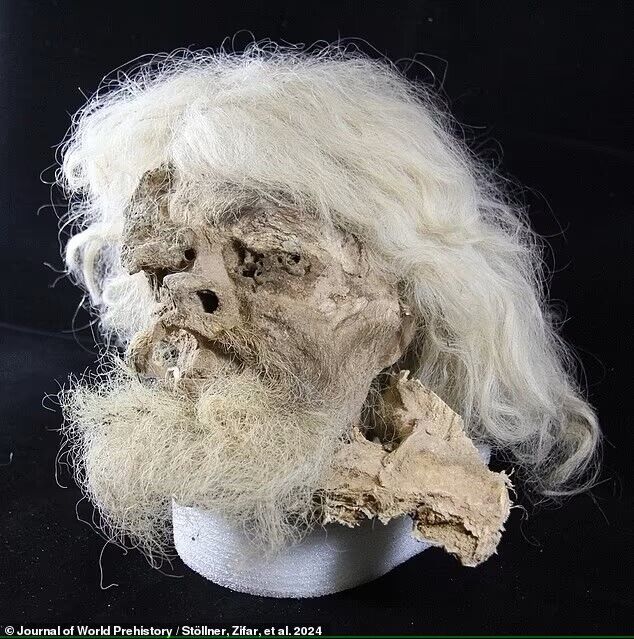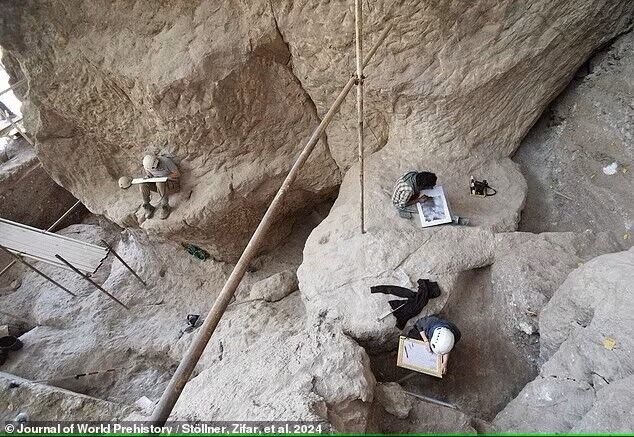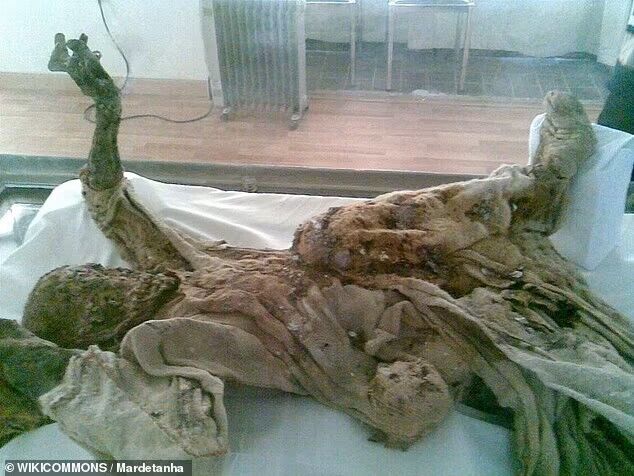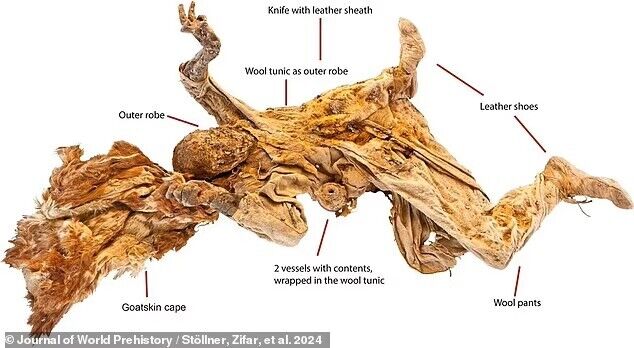News
Frightening photos of the mummies of the "Salt Men of Iran" show the exact moment of their death more than 2,500 years ago
For years, scientists have been trying to unravel the mysteries of a large ancient salt mine in northwestern Iran, in the province of Zanjan, which buried many miners in its wilds. A new study of the found mummies of the "Salt Men of Iran" shows the exact moment of their death more than 2500 years ago.
Archaeologists believe that they are closer than ever to understanding the peculiarities of the remains of the salt mine miners. After all, some of the dead look like zombies, petrified with an expression of death cry, writes DailyMail.
Exploring an ancient mine
Based on settlements unearthed nearby, a new study shows that the first people to extract salt from the mines died here more than 2,500 years ago.
Of the eight mummified Iranian remains found recently, most date from the Achaemenid Empire, which ruled as far as Egypt in the west and the Indus Valley in the southeast. These areas are now part of Pakistan and India.
According to a new study, scholars claim that at the height of the dynasty's rule, "the Achaemenid mine was abandoned after a mining disaster that cost the lives of three miners." Salt production did not resume at this site for almost two centuries.
However, it is thanks to the salt that the mummies of the miners, who died between 405 and 380 BC, are so well preserved to this day. According to scientist Lena Erström and her colleagues from the Mummy Research Group at the University of Zurich, the "hygroscopic" or moisture-absorbing effect of the large salt deposits in the mine caused the diggers to dehydrate until they were "naturally" mummified.
"The resulting dehydration inhibits bacterial growth and stops decomposition," the researcher explained.
But turning back the clock even further to the ancient days of the mine, now officially called the Chehrabad Salt Mine in Duzlak, proved more difficult. For centuries, local residents have been engaged in unauthorized salt mining here.
To understand when salt mining began at the site, a new study has collected data from 18 nearby archaeological sites.
Experts are convinced that the salt mountain, especially one as easily accessible and suitable for surface mining as the Duzlak salt dome, played a central role in the economic life of the local rural population.
The earliest settlements found at the site date back to the Eneolithic or Copper Age, approximately 5000-4000 BC.
An international team of researchers, including expert Lena Erström and her colleagues from the Mummy Study Group, as well as Iranian archaeologist Hamed Zifar from the Zolfaghari Archaeological Museum, have suggested that Stone Age communities may have mined salt using methods lost to time.
An old man with a beard and a teenage miner
Fortunately, the researchers were lucky enough to unearth evidence from the mine's later history, during the great empires of Persia. The first Iranian Saltman (salt man in English) was discovered in the winter of 1993. It was an extremely well-preserved severed head with long white hair and a beard, as well as a gold earring in the left ear.
Carbon-14 dating of the head showed that Saltman 1 lived in the early years of the Sassanian dynasty in 220-390 AD. This so-called Sassanian period was the last of the Persian empires to rule before the Muslim conquests in the seventh century.
Also well preserved is Saltman 1's left shin, which was discovered nearby during previous excavations.
The researchers were able to determine that a complex system of salt production, possibly export-oriented and managed by the empire, was in operation during this period. Over the past several decades of excavations, experts have documented salt mine rock incisions that correspond to wedges and tessellations of Sassanian-era tools.
"Moreover, there is a lot of evidence that donkeys were kept in the mining areas of the Sassanian period. After all, the donkey stalls found indicate that salt in small pieces was transported from the pit in bags and baskets on the animals' backs," the researchers noted.
The scientists also emphasize that "no further activity in the region has been documented after the end of later Sassanian salt production, sometime in the sixth century AD."
Another mummy found Saltman 4, suggests that he was a teenage miner who was almost completely preserved. His remains date back to an early version of the Achaemenid salt mine. The young man was buried alive in a disaster around 400 BC that closed the mine for centuries.
Mummy Saltman 4 is called "the icon of excavations in Chehrabad". "This is primarily due to its excellent preservation. The mummy is fully clothed in woolen pants, a tunic, leather shoes, and a fur cape. Silver earrings were found on the right and left ears. Two clay pots with doughy contents and a knife were found on the boy's body," said the mine researchers.
According to scholars, there are few written sources about salt production in northwestern Iran during the early period and none about the Achaemenid and Sassanian periods. Therefore, research on the mummies found makes a great contribution to the history of this region.
Only verified information is available on the OBOZ.UA Telegram channel and Viber. Do not fall for fakes!







